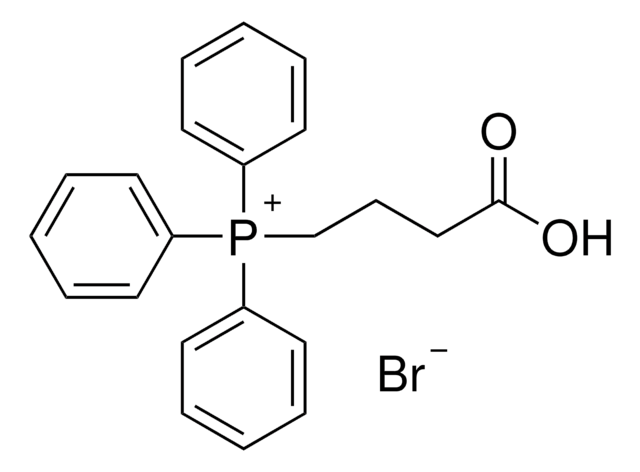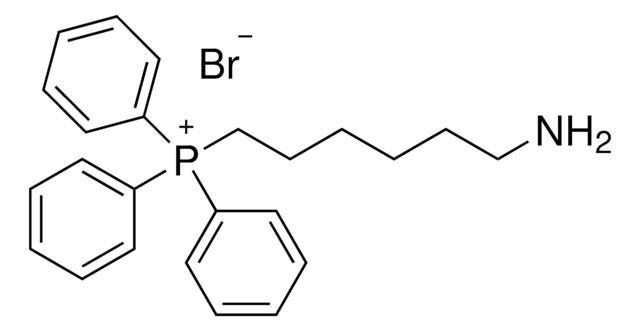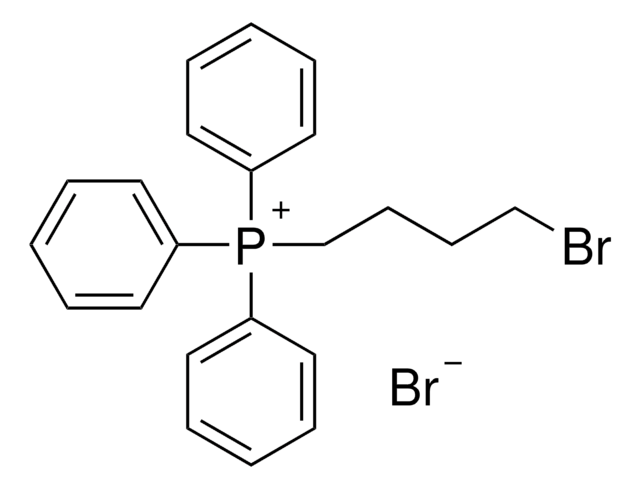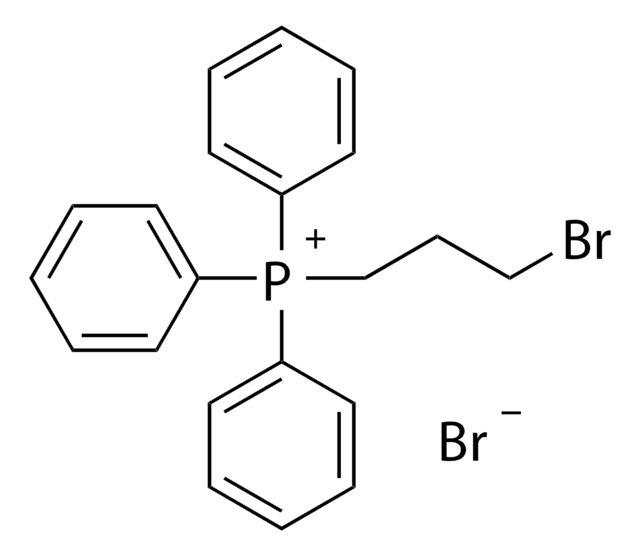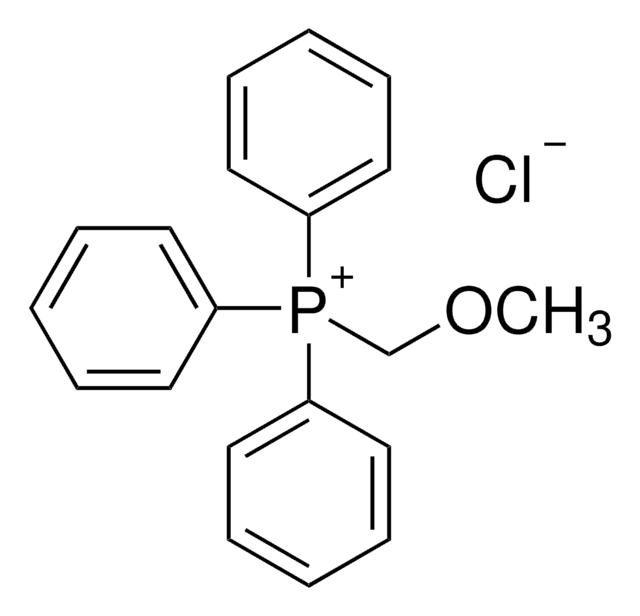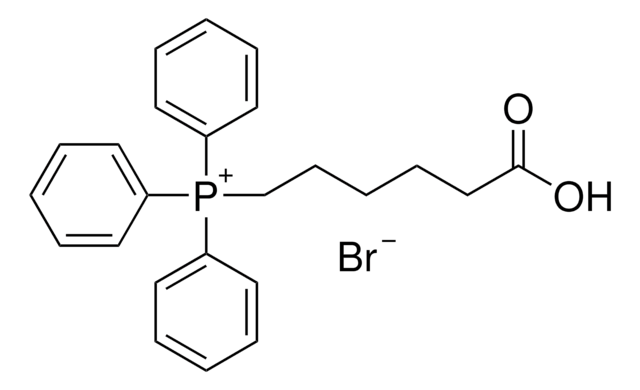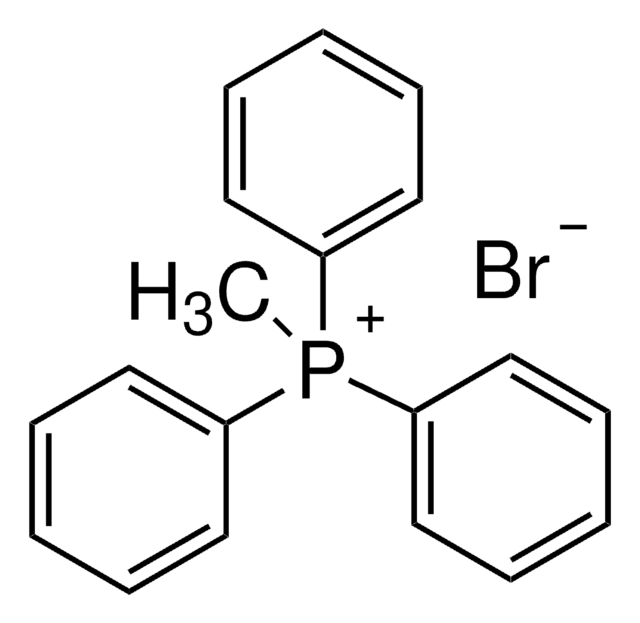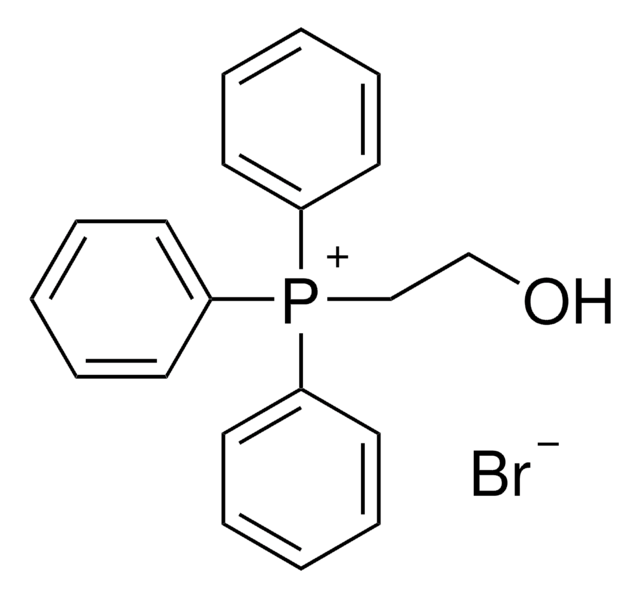157945
(4-Carboxybutyl)triphenylphosphonium bromide
98%
Sinónimos:
5-(Triphenylphosphonio)pentanoic acid bromide, Carboxybutyltriphenylphosphonium bromide, NSC 147756
About This Item
Productos recomendados
Quality Level
assay
98%
form
powder
reaction suitability
reaction type: C-C Bond Formation
mp
204-207 °C (lit.)
functional group
carboxylic acid
phosphine
SMILES string
[Br-].OC(=O)CCCC[P+](c1ccccc1)(c2ccccc2)c3ccccc3
InChI
1S/C23H23O2P.BrH/c24-23(25)18-10-11-19-26(20-12-4-1-5-13-20,21-14-6-2-7-15-21)22-16-8-3-9-17-22;/h1-9,12-17H,10-11,18-19H2;1H
InChI key
MLOSJPZSZWUDSK-UHFFFAOYSA-N
¿Está buscando productos similares? Visita Guía de comparación de productos
Application
- Used as a platform for delivery of pro-apoptotic peptides into the mitochondria of tumor cells
Reactant for preparation of:
- Ring skeletons via ring closing metathesis and double bond migration ring closing metathesis reactions
- Methyl alkenyl quinolones as antimycobacterial agents
- Prostaglandins and their drug analogs via Gold-catalyzed Meyer-Schuster rearrangement
- Diphenylmethylpiperazines as N-type calcium channel blockers as potential therapeutic agents
- Folate receptor-specific glycinamide ribonucleotide formyltransferase (GARFTase) inhibitors with antitumor activity
- Cycloalkylidene alkanols with antileishmanial activity, via Wittig reaction
signalword
Danger
hcodes
Hazard Classifications
Acute Tox. 3 Oral - Eye Dam. 1
Storage Class
6.1D - Non-combustible acute toxic Cat.3 / toxic hazardous materials or hazardous materials causing chronic effects
wgk_germany
WGK 3
flash_point_f
Not applicable
flash_point_c
Not applicable
ppe
dust mask type N95 (US), Eyeshields, Gloves
Elija entre una de las versiones más recientes:
Certificados de análisis (COA)
¿No ve la versión correcta?
Si necesita una versión concreta, puede buscar un certificado específico por el número de lote.
¿Ya tiene este producto?
Encuentre la documentación para los productos que ha comprado recientemente en la Biblioteca de documentos.
Los clientes también vieron
Nuestro equipo de científicos tiene experiencia en todas las áreas de investigación: Ciencias de la vida, Ciencia de los materiales, Síntesis química, Cromatografía, Analítica y muchas otras.
Póngase en contacto con el Servicio técnico